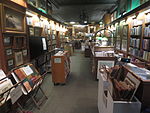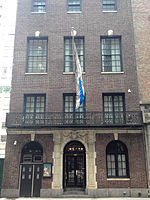59th Street station (New York Central Railroad)
59th Street (Manhattan)Former New York Central Railroad stationsFormer railway stations in New York (state)Midtown ManhattanPages with no open date in Infobox station ... and 4 more
Park AvenueRailway stations in ManhattanUpper East SideUse mdy dates from December 2018

59th Street station is a unused station located in the Park Avenue Tunnel used by the Metro-North Railroad for all of its trains. The station was built by the New York Central & Hudson River Railroad as part of an agreement with New York City. The station was built during the late 1870s, although trains never stopped here. Currently, the station is used as an emergency exit for Metro-North Railroad in the Park Avenue Tunnel.
Excerpt from the Wikipedia article 59th Street station (New York Central Railroad) (License: CC BY-SA 3.0, Authors, Images).59th Street station (New York Central Railroad)
East 59th Street, New York Manhattan
Geographical coordinates (GPS) Address Nearby Places Show on map
Geographical coordinates (GPS)
| Latitude | Longitude |
|---|---|
| N 40.762941 ° | E -73.969752 ° |
Address
East 59th Street 100
10022 New York, Manhattan
New York, United States
Open on Google Maps







